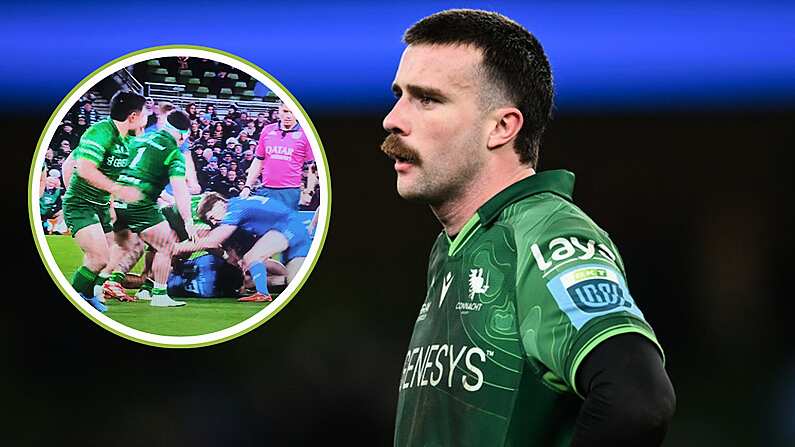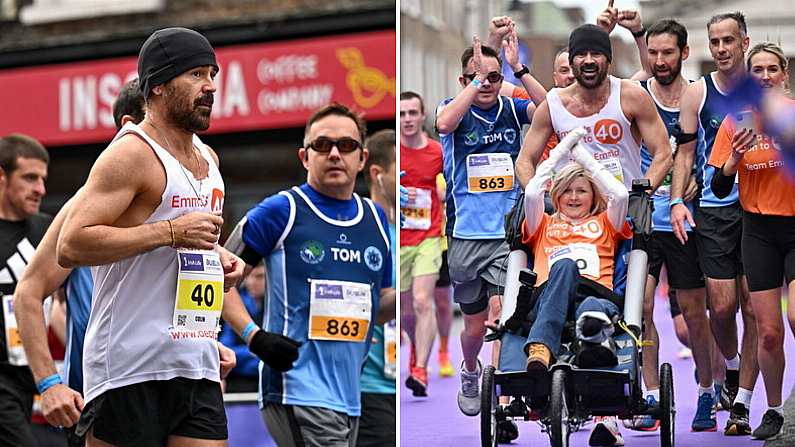The Wings for Life Run is no ordinary race for charity. This event takes place across the world at 10am GMT on May 4, with the Irish leg taking place in the amazing surrounds of the Ring of Kerry, which will be shut down for the occasion.
Not only are you racing against the world, but you can tailor the race to your skill-set, choose your distance and take it on. Join up here.
In the build up to the big race, we will be taking you through some of the top tips for beating your personal best and bringing you lessons from the world of sport that we all can learn from.
Today: Strange Tales From The Olympic Marathon
The Wings race is of course over whatever distance you choose, or whatever distance your body chooses for you. However, if you can hit marathon distance or better you can consider yourself to have achieved something truly life-changing - especially over the spectacularly scenic and challenging Ring of Kerry course.
Modern marathon running began with the raggedy-arsed band who traced ancient steps at the Athens Olympics in 1896, and has exploded into the mass-paticipation event it is today. The stories below are part of the reason why distance-running has captures the public imagination every so often - for reasons that can be inspiring, peculiar or downright outrageous.
1. 1896 - The Originals

The first Olympic marathon followed the route traditionally believed to have been taken by Pheidippides, who ran from Marathon to Athens to bring news of an Athenian victory. Of 25 entrants, 17 started and only eight finished the race. Local water-carrier Spyridon Louis led them home in 2:58:50 and wrote his name into the record books for all time. It was an extremely makeshift affair, much like the the rest of that games, but those runners pioneered distance running as we know it today.

2. 1904 - The weirdest race of all
You could write a book on this one. Or at least, a very detailed and entertaining article like this one. American Fred Lorz was first to reach the finish, but was found out to have hitched a ride in a car from miles nine until 19, when the car broke down and he jogged into the stadium. Lorz was about to be presented with the gold when he was found to have cheated - he cheerfully claimed that it had all been a joke and he was promptly slapped with a liftetime ban from all competition (later reduced to a one-year suspension).
If having one winner use a car wasn't bad enough, the legitimate gold medallist Thomas Hicks used a combination of strychnine and brandy to get himself to the end. He was carried off the track and narrowly avoided dying from the chemical, which is better known for its rat-killing properties.

There's more, of course - Cuban postman Felix Carvajal practically hitch-hiked to St Louis and competed in cut-off street trousers. Even though he hadn't eaten in 40 hours, he finished in fourth despite stopping to eat fruit from an orchard that he later learned were rotten - to his Radcliffe-like discomfort, no doubt.
Two Tswana tribesmen from South Africa, in the US as part of the World's Fair exhibit on the Boer War, entered the race and finished in ninth and twelfth respectively. The guy who finished ninth probably would have done better had he not been chased off course by aggressive dogs.

3. 1908 - Pietri gets helping hand and the world's sympathy

Presumably the Wings For Life authorities are less draconian when it comes to receiving a helping hand when on the brink of deadly collapse - unless perhaps you're likely to win the worldwide race.
In London in 1908, Italy's Dorando Pietri ran the wrong way, collapsed repeatedly, and was famously helped over the line at White City Stadium by the clerk of the course and Dr Michael Bulger, medical officer of the Irish Amateur Athletic Association. He was first to finish but a protest by runner-up Johnny Hayes was upheld, allowing the American to take gold.
The extent of public sympathy for Pietri was such that he was presented with a gold cup by Queen Alexandra the following day. The 1908 edition was also the origin of the now-standard marathon distance of 26 miles and 385 yards - the race was advertised as "around 26 miles" and the start line was moved to be closer to the Royal Box at Windsor Castle.
4. 1952 - Zátopek inspires everyone

Whatever about strychnine overdoses and sympathy trophies, if you want genuine inspiration for this run or any other, then look no further than the Czech soldier and running machine Emil Zátopek.
Running machine sounds awfully cliché, but he really was. The marathon victory was the crowning achievement of his wonder games - he also picked up golds in the 5,000 and 10,000 metres. He entered the long race pretty much for the craic, won by two minutes and set an Olympic record, despite never having won over 26 miles before. He had already bagged a gold and silver in 1948, and was told not to run by doctors just two months before the 1953 games.

Even though he had an absolutely manky running style, Zátopek was a pioneer of interval training, often doing up to 80 intervals of 400 metres apiece. He was known for training in army boots, or with his javelin-gold medallist wife on his back. Even though he remained an extremely humble character, his exploits should remain an inspiration to everyone who is having second thoughts about getting off the couch to do a post-work 5k.
5. 1960 - Bikila does it barefoot
For running hipsters, barefoot running is back in a big way. However, giving it the full Babs Keating has rarely been seen as a serious option for competitive running. In 1960, over a magical, torchlit course in the Eternal City, Ethiopia's Abebe Bikila took the gold in the most natural fashion.
He did it again four years later, but had shoes on in Tokyo. Bikila died aged just 41 in 1973.
https://www.youtube.com/watch?v=1OrcLeUVm3o
6. Neil Horan takes out the leader in 2004
Prior to this egregious act, the most famous Irish impact on the race was John Treacy's silver in 1984 - which was beautifully soundtracked by Jimmy Magee.
Skip forward 20 years, and Brazil's Vanderlei da Lima is leading the race with seven kilometres go. Step forward batshit kilted cleric Neil Horan, a now-defrocked priest from Scartaglen, Co Kerry who was then best known for his protests at the 2003 British Grand Prix.
A little bit like Emily Davison at the Derby, only with no noble cause to champion, Horan made an impressively-timed tackle on Lima, taking him into the crowd. I'm sure if hadn't run miles he would've beat the absolute stuffing out of the infuriating sky pilot.
Lima recovered to take the bronze, but must surely still be haunted by what might have been.












